


xxxxxAs we have seen, the Battle
of Leipzig in October 1813
marked the end of Napoleon’s empire. Despite putting up stubborn
resistance, by March 1814
the Allies were in Paris, and he was forced to abdicate the
following month. He was banned to the island of Elba, just off the
north-
THE NAPOLEONIC WARS 1803 -
NAPOLEON’S ESCAPE FROM ELBA AND
HIS “HUNDRED DAYS”, March -
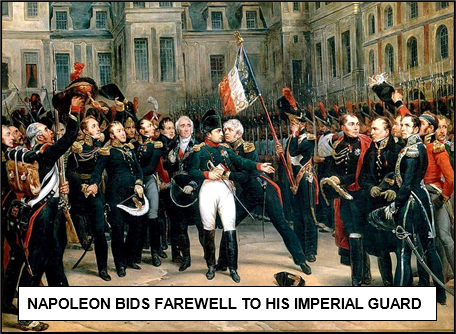 xxxxxAs we
have seen, with the defeat of the French at the Battle of Leipzig in
October 1813,
Napoleon’s empire began to crumble. French rule was overthrown east
of the Rhine, and in the west there was open defiance. By early 1814 Holland and Switzerland had renounced
their allegiance, the British had captured Bordeaux, and the allies
had crossed into northern France. But even at this late hour,
Napoleon -
xxxxxAs we
have seen, with the defeat of the French at the Battle of Leipzig in
October 1813,
Napoleon’s empire began to crumble. French rule was overthrown east
of the Rhine, and in the west there was open defiance. By early 1814 Holland and Switzerland had renounced
their allegiance, the British had captured Bordeaux, and the allies
had crossed into northern France. But even at this late hour,
Napoleon -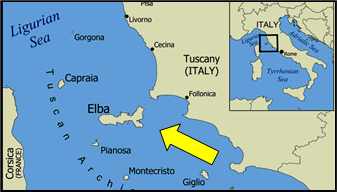 month the Congress of Vienna was convened to work out the peace
settlement. To all intents and purposes the Napoleonic Wars were
over once and for all.
month the Congress of Vienna was convened to work out the peace
settlement. To all intents and purposes the Napoleonic Wars were
over once and for all.
xxxxxThe island of Elba was rather a small kingdom for one who had held sway over the greater part of Europe! Situated six miles off the west coast of Italy, it was 86 square miles in size, and had a population of around 50,000. He was permitted a personal escort of 400 volunteers, together with a household staff, and an annual income of two million francs, but his wife and son (François Charles Joseph Bonaparte) were put in the custody of Marie’s father, the emperor of Austria. He never saw either of them again.
xxxxxNo sooner had he arrived on
the island than he was introducing political and economic reforms,
but he also kept a wary eye on developments in France. There, he
learnt, there was widespread discontent. The people may well have
been pleased to see the last of the Emperor, but the return of the
Bourbons in the person of Louis XVIII meant that the ideals of the
Revolution were put on hold, and its achievements were in jeopardy.
The émigrés who flocked back to France
reopened the old class divisions, and the hatred and mistrust they
had engendered. And on a personal note, the French government was
refusing to pay his allowance, and there was talk at Vienna of his
being moved out of Europe for security reasons. If he were going to
make a comeback, then the sooner he made it the better. By mid-
xxxxxOn the first day of March
Napoleon landed at Cannes with a small contingent of his bodyguard
and, travelling swiftly through the foothills of the Alps, reached
Grenoble in four days. Here he called for the support of the French
people, promising to save them from the tyranny of “priests and
nobles”. In Paris, Louis XVIII, duly alarmed, sent General Ney to
arrest Napoleon. Ney promised to “bring him back in an iron cage”,
but when he met his erstwhile “Emperor” the memory of past glories
proved too great to resist -
xxxxxIncidentally,
the moving scene above -
xxxxx…… Just 25 miles south of Elba lies the uninhabited island of Monte Cristo. This supplied the title of the hero in Alexandre Dumas’ historical romance The Count of Monte Cristo, published by the French novelist in 1844.
xxxxxNapoleon’s arrival in Paris
on the 20th March 1815 marked the start of his return to power, his
so-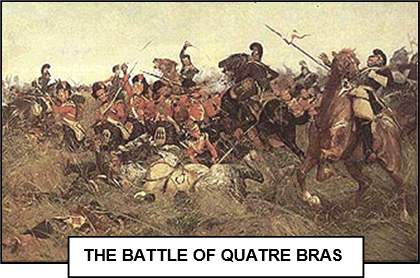 be a constitutional monarch, he solemnly declared, and faithfully
observe the conditions laid down by the Treaty of Paris. But the
powers assembled at Vienna would have none of it. He was immediately
outlawed, a new alliance was formed, and the Duke of Wellington was
appointed supreme commander of the Allied forces. Such a response,
it must be said, hardly came as a surprise to Napoleon who, in fact,
had already started to form a sizeable army. There was no shortage
of veterans to answer his call to arms, their numbers bolstered by
the return of thousands of prisoners released from Russia. By June
he had a fighting force of 125,000 men.
be a constitutional monarch, he solemnly declared, and faithfully
observe the conditions laid down by the Treaty of Paris. But the
powers assembled at Vienna would have none of it. He was immediately
outlawed, a new alliance was formed, and the Duke of Wellington was
appointed supreme commander of the Allied forces. Such a response,
it must be said, hardly came as a surprise to Napoleon who, in fact,
had already started to form a sizeable army. There was no shortage
of veterans to answer his call to arms, their numbers bolstered by
the return of thousands of prisoners released from Russia. By June
he had a fighting force of 125,000 men.
xxxxxThat month Napoleon went on
the offensive, searching out his enemies in Belgium before the
Austrian and Russian forces were able to arrive in France. The
Prussian army, led by Blücher, was at Liège, and the British were at
Brussels. Hexhimself took on the Prussians,
and on the 16th June defeated them at the Battle
of Ligny. Onxthe
same day Marshal Ney met an Anglo-
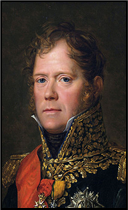
xxxxxIncidentally,
MarshalXMichel Ney
(1769-
xxxxx……
After his execution a rumour circulated that, in fact, the men of
the firing squad had fired blanks and that Ney, having feigned death
by bursting a bag of red liquid against his body, had then been
helped to escape by members of the army. There is no real evidence
to support this, but in November 1846 a school teacher named Peter
Ney of Third Creek, North Carolina, claimed, on his death-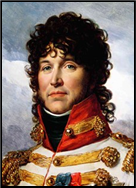 he
was the one and only Marshal Ney!
he
was the one and only Marshal Ney!
xxxxx……
Duringxthe Hundred Days, another of
Napoleon’s former generals, the brilliant cavalry commander Joachim Murat (1767-
G3c-
Acknowledgements
Farewell: by the French painter
Antoine Alphonse Montfort (1802-


